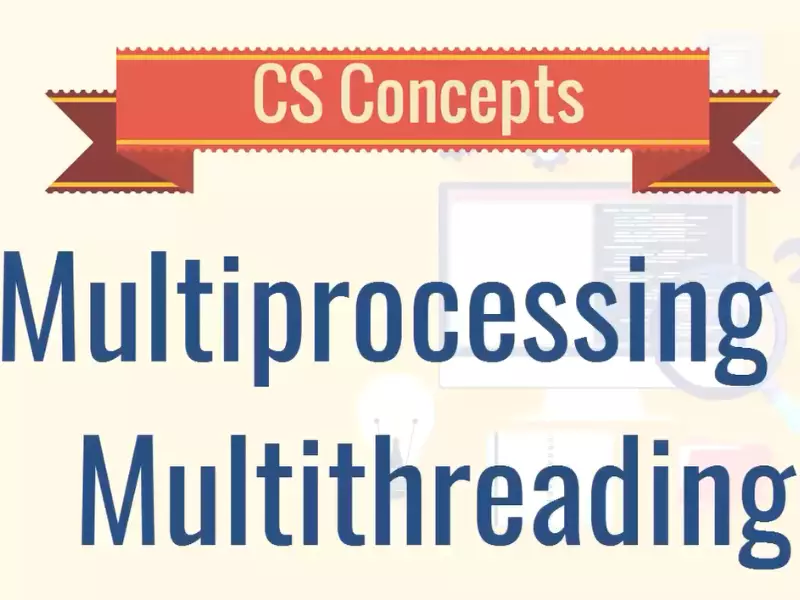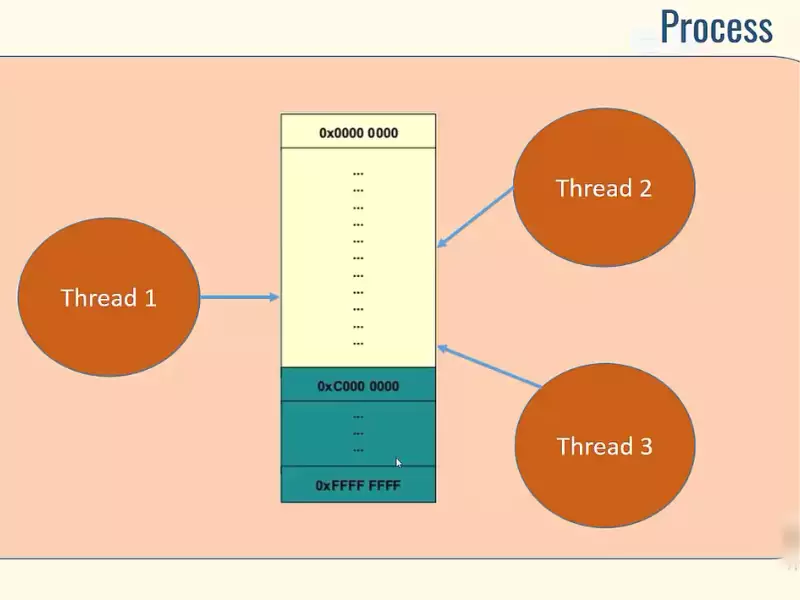In the rapidly evolving world of computing, the concepts of multiprocessing and multithreading stand as pivotal pillars supporting the architecture of modern software development. These techniques are fundamental to enhancing the performance, efficiency, and scalability of applications. By enabling the concurrent execution of operations, they significantly contribute to the optimization of computational resources and the acceleration of task completion times.
Multiprocessing and multithreading, while often mentioned in the same breath, cater to distinct aspects of concurrency. Multiprocessing involves running multiple processes simultaneously, each process operating in its own memory space, thus maximizing CPU usage and improving application performance. On the other hand, multithreading refers to the division of a single process into multiple threads, with each thread executing concurrently within the shared memory space, which enhances the execution efficiency and responsiveness of applications.
The choice between multiprocessing and multithreading hinges on the specific requirements and constraints of the application in question. While multiprocessing excels in scenarios demanding intensive computational power and minimal data sharing among processes, multithreading is preferable for tasks requiring shared memory access and rapid context switching. Understanding the nuances of each approach enables developers to tailor their applications to leverage the full potential of the underlying hardware, thereby delivering superior performance and user experiences.

Core Concepts
What is Multiprocessing?
Definition and Basic Understanding
Multiprocessing is a computing approach that allows multiple processes to run simultaneously on one or more central processing units (CPUs). Each process operates within its own memory space and executes independently of others. This method is pivotal for applications requiring substantial computational power, as it harnesses the full potential of multicore processors.
How Multiprocessing Works
Multiprocessing splits a large task into smaller, independent tasks that run in parallel across different CPUs or CPU cores. This parallel execution reduces the time required to complete the overall task. Here’s a simplified breakdown:
- Task Division: The main task is divided into smaller, independent tasks.
- Parallel Execution: Each task is assigned to a separate process, running concurrently on different CPUs or cores.
- Result Compilation: The results of the parallel tasks are collected and combined to form the final output.
Use Cases and Advantages
- Data Analysis and Scientific Computing: Large datasets can be processed more quickly.
- Web Servers: Handling multiple client requests efficiently.
- Advantages:
- Increased Performance: Leverages multiple CPU cores.
- Reliability: Failure in one process does not affect others.
What is Multithreading?
Definition and Basic Understanding
Multithreading is a technique that allows a single process to contain multiple threads of execution running concurrently. Unlike multiprocessing, threads share the same memory space, enabling efficient communication and data sharing among them. This method improves the responsiveness and processing speed of applications, especially in I/O-bound tasks.
How Multithreading Works
Multithreading involves dividing a process into smaller, runnable units called threads. These threads share the process’s resources but execute independently, allowing multiple operations to proceed in parallel within the same application. Steps include:
- Thread Creation: Multiple threads are created within a single process.
- Concurrent Execution: Threads run concurrently, sharing the same memory space.
- Synchronization: Mechanisms ensure data consistency and thread coordination.
Use Cases and Advantages
- User Interfaces: Enhances responsiveness by handling user input and other tasks simultaneously.
- Network Servers: Manages multiple connections concurrently.
- Advantages:
- Resource Efficiency: Lower memory and resource consumption compared to multiprocessing.
- Quick Context Switching: Faster than switching between processes.
Key Differences
Process vs. Thread
- Fundamental Differences: A process is an independent execution unit with its own memory space, while a thread is a lighter, shareable unit of execution within a process.
- Memory and Resource Allocation: Processes have separate memory allocations, whereas threads share the memory space of their parent process.
Performance
- Speed and Efficiency Comparison: Multithreading often leads to quicker execution times for I/O-bound tasks due to shared memory and faster context switches. Multiprocessing excels in CPU-bound tasks by utilizing multiple cores.
- Task Handling Capabilities: Multiprocessing can handle multiple large-scale tasks independently, while multithreading is ideal for tasks that benefit from shared memory access.
Resource Utilization
- CPU and Memory Usage: Multiprocessing can increase CPU utilization by running processes in parallel. Multithreading is more memory efficient, as threads share the same memory space.
- Impact on Application Performance: Properly utilized, both methods can significantly boost application performance, though their effectiveness depends on the application’s nature and the underlying hardware.
Scalability
- Handling Large-Scale Applications: Multiprocessing is suited for scaling applications vertically by adding more processing power. Multithreading can efficiently scale applications horizontally within the constraints of a single process’s resources.
- Advantages in Different Scenarios: Multiprocessing is preferred for high-performance computing tasks, while multithreading is advantageous for applications requiring quick access to shared data and resources.
Implementation
Multiprocessing Implementation
Tools and Languages Supporting Multiprocessing
- Python: With the
multiprocessinglibrary. - Java: Utilizes multiple processes through its concurrent APIs.
- C/C++: Offers extensive support with POSIX threads (pthreads) and fork() for process creation.
Examples and Best Practices
- Data Partitioning: Divide data into chunks that can be processed in parallel.
- Process Pooling: Use a pool of worker processes to execute tasks concurrently.
- Memory Management: Ensure efficient use of memory and avoid leaks in each process.
Multithreading Implementation
Tools and Languages Supporting Multithreading
- Python: The
threadingmodule enables simple multithreading. - Java: Built-in support with the
Threadclass andRunnableinterface. - C#: Offers rich threading capabilities with the
System.Threadingnamespace.
Examples and Best Practices
- Thread Safety: Use synchronization techniques to prevent data corruption.
- Resource Sharing: Efficiently share resources among threads to optimize performance.
- Error Handling: Implement robust error handling within threads to maintain application stability.

Choosing Between Them
Factors to Consider
When deciding between multiprocessing and multithreading, several key factors need to be taken into account to ensure that the chosen method aligns with the application’s needs and the available system resources.
Application Requirements
- Task Type: Determine if tasks are CPU-bound (better suited for multiprocessing) or I/O-bound (better suited for multithreading).
- Concurrency Needs: Assess the level of concurrency required. High concurrency tasks may benefit more from multithreading due to lower overhead.
- Data Sharing: Consider the need for sharing data between tasks. Multithreading offers easier data sharing due to a shared memory space.
System Resources and Limitations
- CPU Cores: The number of available CPU cores can influence the decision. Multiprocessing can take full advantage of multiple cores.
- Memory Constraints: Multithreading is generally more memory efficient than multiprocessing because threads share the same memory space.
- System Overhead: Evaluate the system overhead associated with each method. Multiprocessing involves more overhead due to process creation and inter-process communication.
Real-world Applications
Practical examples and case studies illustrate how multiprocessing and multithreading are applied in real-world scenarios, showcasing their benefits in various applications.
Case Studies on Multiprocessing
High-Performance Computing (HPC)
In fields such as scientific research, financial modeling, and engineering simulations, multiprocessing is used to process large datasets and perform complex calculations. For instance, weather forecasting models utilize multiprocessing to run multiple simulations in parallel, significantly reducing the time required to generate forecasts.
Video Processing Applications
Video processing, including rendering and encoding, can be highly CPU-intensive. Multiprocessing allows these tasks to be divided across multiple CPUs, enabling faster processing of videos, reducing encoding times, and improving the efficiency of video editing software.
Case Studies on Multithreading
Web Servers
Web servers often employ multithreading to handle multiple client requests simultaneously. This allows a single server to manage numerous connections, improving responsiveness and throughput. Apache HTTP Server and Nginx are examples of web servers that utilize multithreading to efficiently serve web pages to multiple clients at once.
Android Applications
Android apps use multithreading to maintain a smooth user interface while performing background tasks such as data fetching, image processing, and database operations. This ensures that the application remains responsive to user interactions, even when executing complex operations.
Pros and Cons
Understanding the advantages and disadvantages of both multiprocessing and multithreading is crucial for making an informed decision that best suits the application’s needs.
Summary of Advantages and Disadvantages
Multiprocessing
Advantages:
- Maximizes CPU Usage: By running processes in parallel, multiprocessing can utilize multiple CPU cores, leading to significant performance improvements for CPU-bound tasks.
- Isolation: Since each process operates in its own memory space, failures in one process do not affect others, enhancing the application’s reliability.
Disadvantages:
- Higher Memory Usage: Each process requires its own memory space, leading to higher memory consumption.
- Overhead: Creating and managing processes involve more overhead than threads, potentially reducing efficiency for tasks that require frequent communication or data sharing between processes.
Multithreading
Advantages:
- Memory Efficiency: Threads share the memory space of their parent process, resulting in lower memory usage compared to multiprocessing.
- Faster Communication: Data sharing between threads is more straightforward and faster due to shared memory, making it ideal for tasks that require frequent communication.
Disadvantages:
- Complexity: Managing threads can be complex, especially in terms of ensuring data consistency and handling synchronization issues.
- Limited by Single Process: All threads run within the same process; if the process crashes, all threads are terminated, potentially affecting the application’s stability.
Frequently Asked Questions
What is the main difference between multiprocessing and multithreading?
The main difference lies in their approach to concurrency. Multiprocessing executes multiple processes simultaneously, with each process running in its own memory space, which is ideal for tasks requiring significant computational resources without the need for shared data. Multithreading, in contrast, divides a single process into multiple threads that share the same memory space, facilitating efficient execution of tasks that require shared access to data.
How do multiprocessing and multithreading affect application performance?
Multiprocessing can significantly enhance application performance by utilizing multiple CPU cores for parallel task execution, making it well-suited for compute-heavy applications. Multithreading improves performance by allowing concurrent execution of threads within a single process, reducing the overhead associated with process creation and context switching, thus making applications more responsive.
When should I choose multiprocessing over multithreading?
Choose multiprocessing when your application involves heavy computational tasks that can run independently without the need for sharing data between processes. It’s particularly beneficial for CPU-bound operations. Opt for multithreading when your tasks are I/O-bound or require frequent access to shared resources, as it enables smoother interaction and quicker execution within a single process’s shared memory space.
Can multiprocessing and multithreading be used together?
Yes, multiprocessing and multithreading can be used together in applications to leverage the advantages of both concurrency models. This hybrid approach can optimize resource utilization, enhance performance, and improve the responsiveness of applications by efficiently managing CPU-bound and I/O-bound tasks.
Conclusion
Choosing the right concurrency model, whether multiprocessing, multithreading, or a combination of both, plays a crucial role in the development of efficient and high-performance applications. By understanding their distinct characteristics and application scenarios, developers can make informed decisions that align with the specific needs and constraints of their projects. This not only ensures optimal utilization of computational resources but also significantly enhances the overall user experience.
In conclusion, the landscape of application development continually evolves, with multiprocessing and multithreading serving as essential tools in the developer’s arsenal. Their strategic application can unlock new levels of performance and efficiency, paving the way for innovative solutions that meet the demands of today’s technology-driven world.
